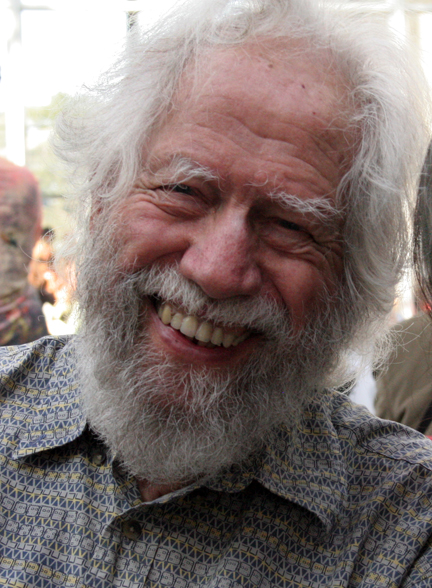Sasha Shulgin, one of the lights of our time, has had a stroke and needs financial help. He’s a lovely man, known to many of us since the 80s when he gave us MDMA, popularly known as ecstasy, and went on to systematically synthesize and publish a vast catalog of entheogenic substances. I’ve thought that if you put ecstasy in the drinking water, even a one-time exposure to the pure stuff (not what they use at raves where they adulterate it), everyone would get a revelation about how we can keep our hearts open, which is the doorway to happiness. On my blog, column left, in Outside the Box Ideas, I have this entry: ” 7. Give ecstasy to people we want info from — turn evil people into heart-connected ones.”
This is a communication that was sent to me that i am passing along:
PLEASE HELP, SASHA NEEDS YOUR SUPPORT
MDMA, popularly known as ecstasy, is a chemical substance that engenders emotional openness, trust and often deep psychological healing. It is one of the few drugs that has been phenomenally effective as a therapeutic agent in psychotherapy, but was also adopted by rave dance culture and demonized by the drug control establishment, and listed as a controlled substance. However, recently approved new studies using it with PTSD (post traumatic stress disorder) have shown that it can be tremendously effective, in some cases apparently offering a cure after only one or a few sessions. Ironically, many believe that if Sasha had not altruistically put it in the public domain, but had instead allowed it to be patented by a major pharmaceutical company, it would still be legal.
Yesterday, on the way to the hospital for a scheduled test, Sasha had a stroke. He has been struggling for six months with an ulcer on his left foot that won’t heal, hoping to avoid amputation. Sasha & Ann have been in serious financial trouble for some years, and the coming medical bills will be a burden they can’t bear alone. Please, express your gratitude for all the work that Sasha has done, for everything he has given to the world, and give something back. Think of all the ways that your life, and the lives of others, have been healed, transformed, and bettered by this wonderful man. He needs your help now. No amount is too small or too large. Please give until it feels good…not until it hurts.
For non-tax-deductible contributions: Paypal $ to annandsashashulgin@comcast.net
Or snailmail: Sasha Shulgin, c/o Transform Press, PO Box 13675, Berkeley CA 94712.For tax-deductible online donations to support the completion of Shulgin publishing projects that are underway: http://bit.ly/crNrgl
Please spread this information.


 Follow
Follow








